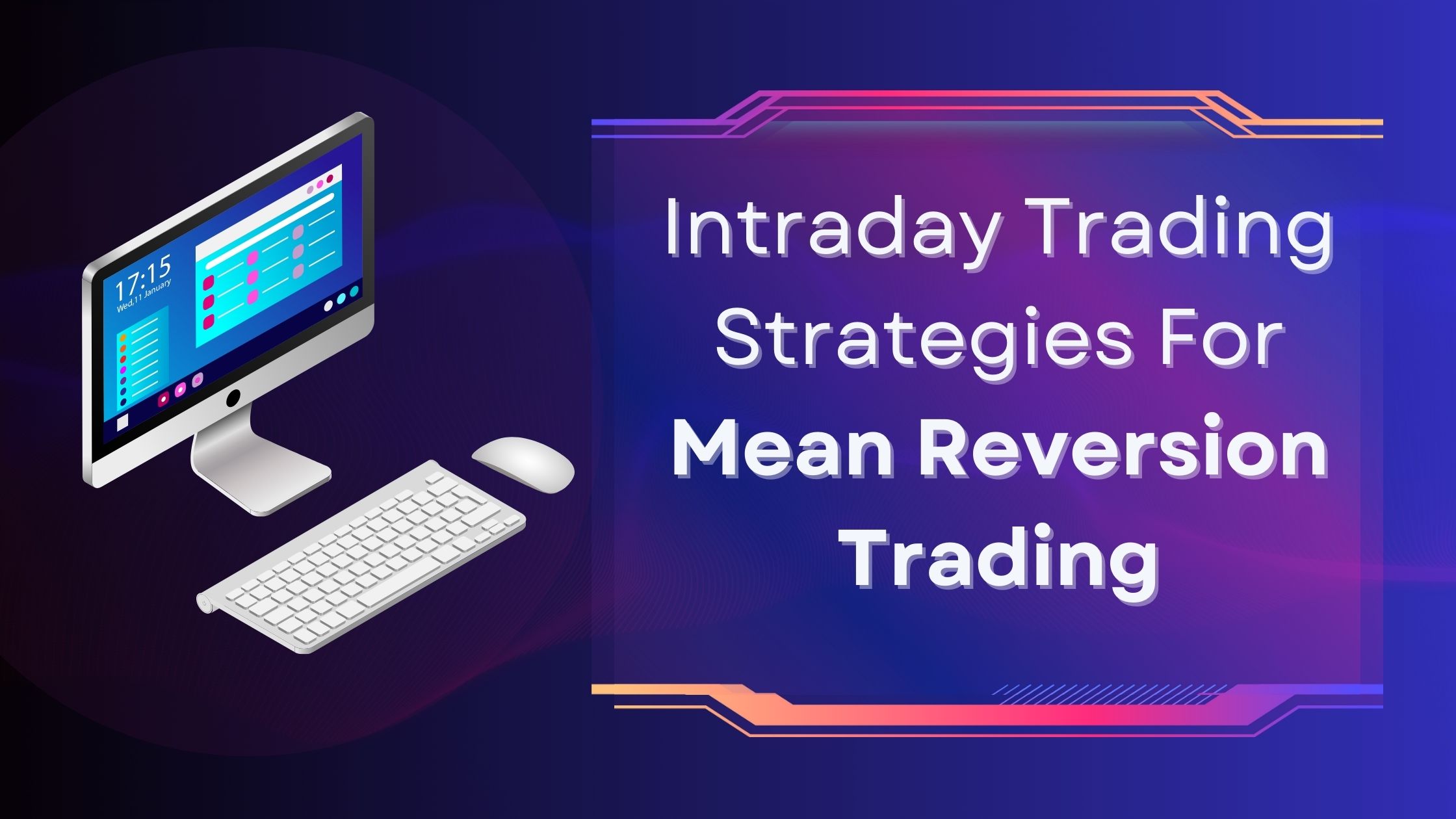
Intraday trading, also known as day trading, is a popular approach where traders aim to profit from short-term price fluctuations within a single trading day. Successful intraday trading requires a solid understanding of various strategies, and one such strategy is mean reversion trading. In this article, we will delve into the intricacies of mean reversion trading and explore how it can be applied effectively in intraday trading.
Understanding Mean Reversion
Mean reversion is a concept derived from statistics that suggests that over time, the price of an asset tends to move towards its average or mean value. In trading, mean reversion implies that when prices deviate significantly from their mean, they are likely to revert back to the mean. This phenomenon provides an opportunity for traders to enter positions in anticipation of the price returning to its average level.
In the context of intraday trading, mean reversion can be applied to short-term price fluctuations. Traders look for instances where the price has deviated from its average or fair value and take positions based on the expectation of price reversion.To identify mean reversion opportunities, traders employ various technical indicators and tools that help determine when a price is overbought or oversold.
Identifying Mean Reversion Opportunities
One way to identify potential mean reversion opportunities is by recognizing overbought and oversold conditions. Overbought refers to a situation where the price has risen too steeply and is likely to reverse downwards, while oversold indicates a sharp decline in price, suggesting a potential upward reversal. Technical indicators like the Relative Strength Index (RSI) and Stochastic Oscillator can help identify these conditions.
Additionally, traders analyze price patterns and trends to determine if a security is deviating from its typical behavior. Chart patterns such as double tops or bottoms and trendlines can be useful tools for spotting potential mean reversion opportunities.
Developing a Mean Reversion Trading Strategy
To effectively implement a mean reversion trading strategy, traders need to establish clear entry and exit points. Entry points are determined when a security’s price deviates significantly from its mean, signaling a potential reversion. Exit points can be set at the mean or at predetermined profit targets.
Stop-loss orders are essential to protect against adverse price movements. These orders are placed at a predetermined level below the entry price and help limit potential losses if the price continues to move against the anticipated reversion.
Calculating risk-to-reward ratios is crucial in mean reversion trading. Traders need to assess the potential profit relative to the potential loss for each trade. This ratio helps determine if a trade is worth taking, considering the associated risks. Applying position sizing techniques is another important aspect of mean reversion trading. Traders allocate a specific portion of their capital to each trade based on their risk tolerance and the size of their trading account.
Implementing Mean Reversion Trading Strategies
Choosing the right time frames for intraday trading is crucial when applying mean reversion strategies. Shorter time frames, such as 5-minute or 15-minute charts, are commonly used as they capture smaller price fluctuations within a trading day.
Limit orders are often employed to execute trades in mean reversion strategies. By setting a buy limit order slightly below the current price or a sell limit order slightly above the current price, traders can wait for the price to reach a desired level before entering a position.
Once a position is established, it is important to monitor and adjust it as necessary. Traders may consider moving stop-loss orders closer to the entry price as the price moves in their favor. This trailing stop technique allows for the potential locking in of profits while still giving the trade room to develop.Emotional control and discipline are vital for successful mean reversion trading. Traders need to stick to their trading plans and avoid impulsive decisions based on fear or greed. Developing a mindset focused on long-term profitability and consistently following the strategy’s rules is key to achieving trading success.
Backtesting and Optimization
Backtesting mean reversion strategies using historical data is essential to evaluate their performance. Traders can simulate trades using past price data to assess the strategy’s effectiveness. By analyzing the results, traders can identify potential strengths and weaknesses and make adjustments accordingly.
Optimizing mean reversion strategies involves tweaking various parameters, such as entry and exit thresholds, to enhance performance. However, it is important to strike a balance between optimizing the strategy and avoiding overfitting the data. Over-optimization can lead to strategies that perform well in historical testing but fail to generate profits in real-time trading.
Risk Management in Mean Reversion Trading
Like any trading strategy, mean reversion trading carries inherent risks. Traders must manage these risks effectively to protect their capital. Risk management techniques include setting appropriate stop-loss orders, which help limit potential losses, and using trailing stops to secure profits as the trade moves favorably.
Position sizing is also crucial in risk management. Traders should never risk more than a predetermined percentage of their trading capital on a single trade. This approach ensures that losses on individual trades do not have a significant impact on overall account balance.
Psychology and Discipline
Psychology plays a significant role in mean reversion trading. Traders need to control their emotions, such as fear and greed, which can cloud judgment and lead to impulsive decisions. By maintaining a disciplined approach, traders can avoid chasing trades or prematurely exiting positions based on emotions rather than a well-defined strategy.
It is important to remember that not every mean reversion trade will be profitable. Traders must accept that losses are a part of the trading process and focus on the overall profitability of the strategy. Consistency and discipline are key to long-term success.
Common Challenges in Mean Reversion Trading
Mean reversion trading presents its own set of challenges. False signals are a common occurrence, where the price appears to be reverting but continues in its original direction. Traders need to develop the skill of distinguishing genuine mean reversion opportunities from false signals by combining multiple indicators and analyzing other factors such as volume.
Market volatility can also pose challenges in mean reversion trading. During periods of high volatility, price movements may be more erratic, making it difficult to identify reliable mean reversion opportunities. Traders must be adaptable and adjust their strategies accordingly based on market conditions.
Monitoring and Adjusting the Mean Reversion Strategy
To ensure the ongoing effectiveness of a mean reversion strategy, it is crucial to regularly monitor its performance. Traders should review trades, assess profitability, and identify any patterns or areas for improvement. Adjustments can then be made to the strategy, such as modifying entry and exit thresholds or changing the time frames used for analysis.
Continuous learning is essential for mean reversion traders. Staying updated with market trends, learning from past trades, and incorporating new techniques can help refine and improve the strategy over time.
Case Study: Applying Mean Reversion Strategy to a Stock
Let’s consider a case study to illustrate the application of mean reversion principles. Suppose a trader identifies a stock that has recently experienced a significant price increase, causing it to become overbought. The trader believes the stock’s price will revert to its mean.
Using technical indicators and analyzing price patterns, the trader identifies a suitable entry point where the price has deviated significantly from its mean. The trader enters a short position, anticipating a downward price correction.
The trader sets a stop-loss order slightly above the entry point to limit potential losses if the price continues to rise. Profit targets are established near the mean or at predetermined levels, allowing the trader to exit the position and lock in profits.
Throughout the trade, the trader monitors the price closely and adjusts the stop-loss order accordingly. If the trade moves favorably, the trader may trail the stop-loss order to protect profits. Alternatively, if the trade moves against expectations, the trader may exit the position before the stop-loss order is triggered to minimize losses.
At the conclusion of the trade, the trader reviews the outcomes and evaluates the effectiveness of the mean reversion strategy. This analysis helps the trader learn from the trade, make necessary adjustments, and refine the strategy for future trades.
Benefits and Limitations of Mean Reversion Trading
Mean reversion trading offers several benefits. It takes advantage of price fluctuations and aims to profit from the tendency of prices to revert to their mean. It can be especially effective in range-bound markets where prices often oscillate between support and resistance levels.
However, mean reversion trading also has limitations and risks. Markets can remain in overbought or oversold conditions for extended periods, leading to potential losses if the price fails to revert as expected. False signals and unexpected market events can also result in losses.
Traders considering mean reversion strategies should carefully assess their risk tolerance, adaptability to market conditions, and ability to manage emotions. It is crucial to thoroughly backtest and optimize the strategy before implementing it with real money.
Conclusion
Mean reversion trading is a popular strategy employed in intraday trading to capitalize on short-term price fluctuations. By identifying opportunities where prices have deviated significantly from their mean, traders can enter positions in anticipation of price reversion.
Implementing mean reversion strategies requires careful analysis, the use of technical indicators, and risk management techniques. Traders must maintain discipline, control emotions, and continuously monitor and adjust their strategies to adapt to changing market conditions.
While mean reversion trading offers potential benefits, it is important to recognize its limitations and risks. Traders should thoroughly understand the strategy, test it rigorously, and carefully manage their risk exposure.
Mean reversion trading can be a valuable addition to a trader’s arsenal of intraday strategies, providing opportunities to profit from short-term price movements and the tendency of prices to return to their average values.






